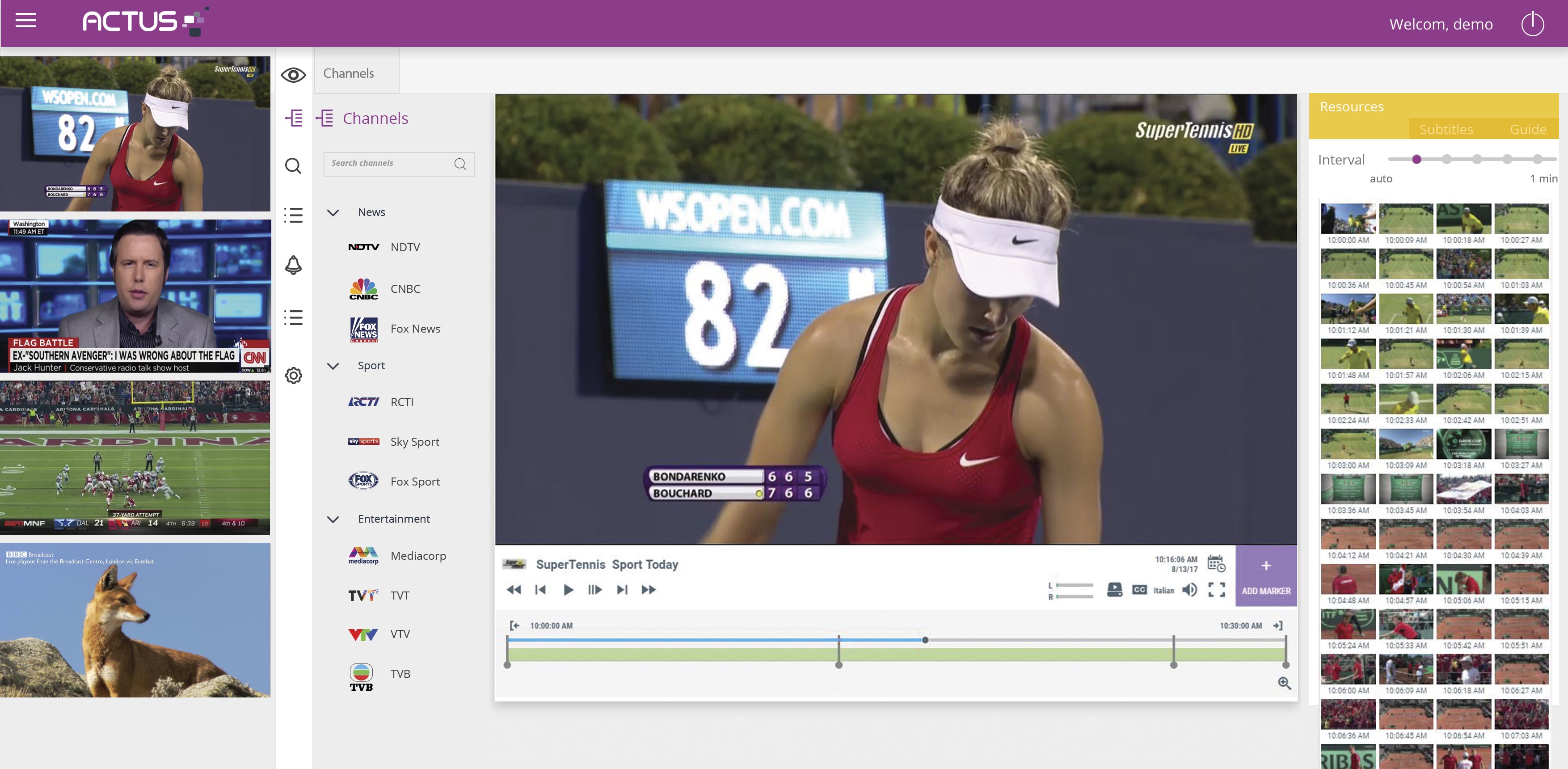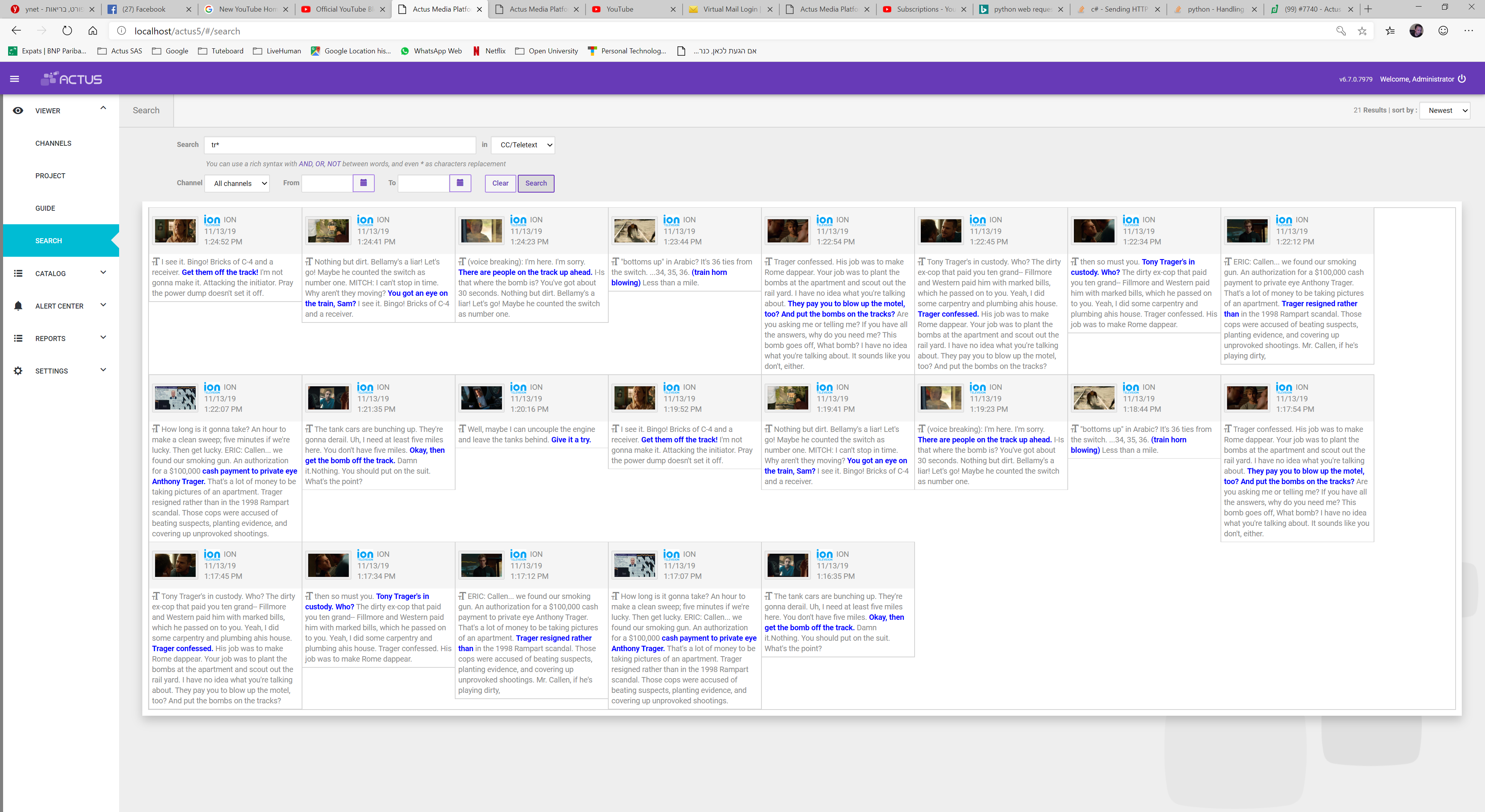AI Is Transforming Compliance to Enable Intelligent Media Monitoring
Traditionally, broadcasters and media operators have relied on automated systems for recording, monitoring and to maintain compliance with mandatory requirements, such as loudness regulations, SCTE standards and closed caption rules. In recent years, compliance solutions have evolved significantly, allowing broadcasters to support a larger variety of video inputs and a growing number of OTT formats. But some compliance solutions go way beyond this.

Today, as broadcasters and TV networks look to further improve the efficiency of their workflow and save costs, artificial intelligence (AI)-based compliance and monitoring is having a major impact on the industry. The role of compliance systems extends beyond technical compliance (i.e., audio and video quality checks and alerts, loudness checks, detection of missing closed captions), which are more considered as technical monitoring, to include content analysis as well as automated content analysis.
ADVANTAGES OF AI COMPLIANCE AND MONITORING
Today’s media companies are dealing with a massive amount of content and data. Being able to quickly analyze data, find relevant content and turn that content into engaging clips is critical for broadcasters to increase viewer engagement, support content that is aired on TV and build their brands.
An intelligent, data-driven platform can dramatically speed up broadcasters’ workflows by allowing media companies to automatically tag, organize and categorize video recordings to enable rapid retrieval of relevant content and clips creation for social media outlets and the web. Processes that used to require hours of manual labor are now completely instantaneous.
AI-based solutions also allow media companies to more intelligently monitor and search for content beyond the channel name, date/time, extracted metadata (i.e., as run/EPG, closed caption) and any extracted or manually entered metadata. Broadcasters can search for spoken words, text that appears in video content, specific faces and ads that have been aired. In addition to searching, they can be automatically alerted any time relevant data appears within the audio or video.
How is this useful? Let’s say a broadcaster wants to automatically generate clips every time the word “football” is said. Assuming the monitoring platform includes a workflow for clips creation, AI enables ultra-fast clips turnaround, saving broadcasters valuable time and money. There’s no need for human resources to monitor or search: the information will pop up and clips can be done automatically. This process is extremely accurate, ensuring that they do not miss any relevant content.
The professional video industry's #1 source for news, trends and product and tech information. Sign up below.
WHAT TO LOOK FOR IN AN AI MONITORING SYSTEM

The best AI-based monitoring systems offer broadcasters a single, integrated solution for compliance, clips creation and quality of service monitoring. Not long ago, each of these tasks required a different piece of equipment, from different vendors. Being able to perform a wide range of tasks from one platform not only saves costs, rack space, maintenance and training, it also benefits broadcasters from a pre-integration standpoint. Hence, it’s important to look for a monitoring system that supports a wide range of capabilities, beyond standard compliance requirements.
It’s also essential to choose a media monitoring platform that supports multiple deployment environments, including on-premise, virtualization, cloud and hybrid. This gives broadcasters the most flexibility, allowing them to select the model that fits their business the best. Nowadays, the AI capabilities of monitoring systems are exclusively cloud-based to enable transparent AI engine upgrades and continuous advancements. Hosted in the cloud, the AI engine keeps learning, and no training is needed, which are benefits that on-premises and VM systems simply cannot offer.
CONCLUSION
Having a unified platform for all broadcast requirements—from broadcast recording to monitoring, compliance, clips creation and exporting to OTT, social media, analysis, quality assurance—makes the most financial sense for media companies. By adding AI to the mix, broadcasters can further streamline their operations and drive monetization.
Raphael Renous is CTO and R&D Manager at Actus Digital. He is responsible for the technical specification and implementation of Actus Digital’s Actus system, including designing the video recording engine and specializing in software architecture and application of new technologies.
Previously, Raphael held a number of important positions at Microsoft, including lead program manager of its Distributed Systems Group. While at Microsoft, he successfully led the integration of the transaction functionality across products within Microsoft. Raphael has a bachelor’s degree and master’s degree in computer science.
